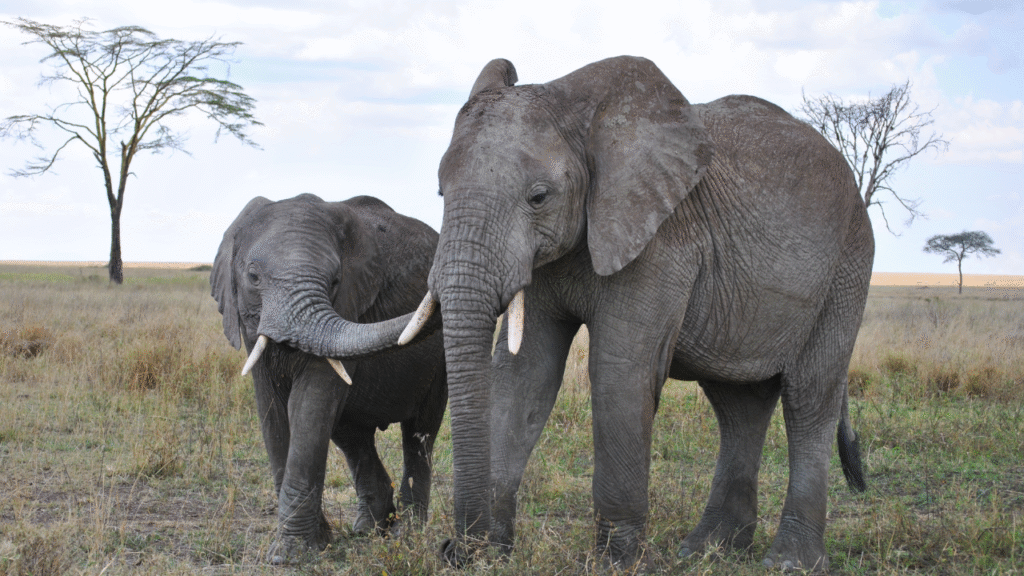Elephants and Water: How They Survive Droughts in the Wild
In the vast and often unforgiving landscapes of Africa and Asia, elephants have evolved to become some of the most resourceful survivors of drought. Their relationship with water is not just essential—it’s a matter of life and death. In this article, we’ll explore how elephants find, store, and conserve water during the driest months, and why their survival strategies are critical for entire ecosystems.

The Importance of Water for Elephants
Water is central to an elephant’s daily life. On average, an adult elephant drinks between 100–200 liters of water per day. This is not only for hydration—they use water to bathe, regulate body temperature, and keep their skin clean from parasites and dust.
But during droughts, water sources disappear. Rivers shrink, watering holes dry up, and vegetation dies. Without moisture, elephants must travel long distances and rely on ancient knowledge passed down through generations to survive.
How Elephants Find Water in Drought Conditions
1. Memory and Migration
Elephants are known for their incredible memory. Matriarchs—the female leaders of elephant herds—remember the locations of water sources from previous years. During droughts, they lead their families across great distances, sometimes over 50 km, to hidden springs, seasonal rivers, and underground wells.
2. Digging for Water
Elephants are natural engineers. Using their tusks and trunks, they dig waterholes in dry riverbeds. Their large feet help compact the sand around the hole, allowing cleaner water to rise to the surface. Other animals in the savanna often rely on these elephant-made wells for survival.
3. Sensing Underground Water
Some research suggests elephants may detect vibrations and subtle scent changes that hint at underground water sources. This extraordinary sense helps them find water that would otherwise remain hidden beneath the surface.
Water Storage and Conservation
1. Storing Water in the Trunk
While elephants don’t store water long-term like camels, their trunks can hold about 8–10 liters of water. In emergencies, elephants have been seen filling their trunks and spraying water into their mouths later, acting like temporary containers.
2. Reducing Activity
During extreme droughts, elephants often reduce their movement during the hottest parts of the day, conserving energy and water. They may rest under trees or near muddy areas where the ground retains some moisture.
The Role of Elephants in Water Access for Other Species
Elephants are keystone species. When they dig waterholes or uncover hidden springs, they create water access for hundreds of other animals—zebras, antelopes, birds, and even predators. In this way, elephants are not just survivors—they are providers in the dry season.
Threats and Challenges in a Warming World
Climate change is intensifying droughts across elephant habitats. Coupled with human encroachment and deforestation, elephants face shrinking access to water. In some areas, man-made barriers like fences and roads prevent elephants from reaching ancestral water routes, further endangering their survival.
Conservation and the Way Forward
Conservation efforts now include:
- Building artificial waterholes in drought-prone regions
- Removing barriers to traditional migratory paths
- Working with local communities to reduce water conflicts
Protecting elephants means protecting ecosystems. Their survival strategies during droughts are not just fascinating—they’re essential for biodiversity.
Final Thoughts
Elephants and water have a bond forged by evolution, intelligence, and deep memory. As climate challenges grow, understanding and protecting this bond is more urgent than ever. By learning how elephants survive droughts, we gain insight into resilience, cooperation, and the silent intelligence of nature.








